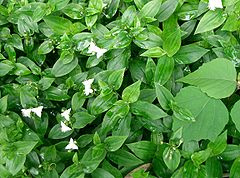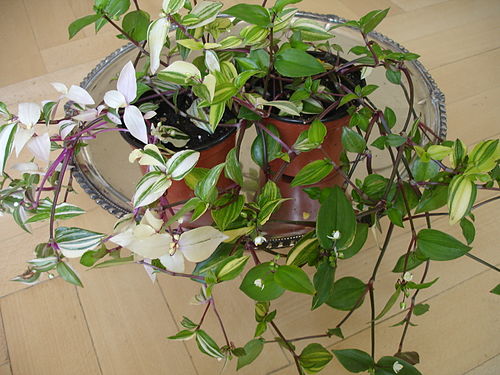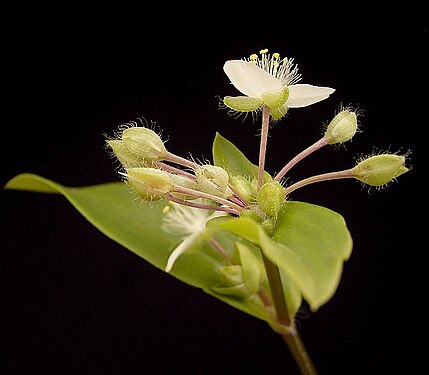Tradescantia fluminensis
| Habit | herbaceous
| |
|---|---|---|
| Height: | ⇕ | 12 in"in" can not be assigned to a declared number type with value 12. to 20 in"in" can not be assigned to a declared number type with value 20. |
| Width: | ⇔ | 24 in"in" can not be assigned to a declared number type with value 24. to 60 in"in" can not be assigned to a declared number type with value 60. |
| Lifespan: | ⌛ | perennial |
| Origin: | ✈ | Brazil, Argentina |
| Exposure: | ☼ | part-sun, shade |
|---|---|---|
| Water: | ◍ | wet, moist |
| Features: | ✓ | foliage |
| USDA Zones: | 9 to 11 | |
| Sunset Zones: | 12-28, indoors | |
| Flower features: | ❀ | white |
Read about Tradescantia fluminensis in the Standard Cyclopedia of Horticulture
|
|---|
|
Tradescantia fluminensis, Veil. (T. mundula, Kunth. T. albiflora, Kunth. T. repens, T. repens vittata, T. viridis, T. viridis vittata, T. viridis Goeschkei, T. prostrata, T. procumbens, T. striata, Hort. T. tricolor, Hort., in part. T. myrtiflora, Hort.). Wandering Jew in part. Glabrous, with shining sts. and lvs., the nodes conspicuous, trailing, or the ends of the shoots ascending: lvs. ovate-acute, without distinct petiole, ciliate at the very base, the sheaths 1/4 – 3/8 in. long: fls. white, hairy inside, the 6 stamens all alike, borne several together in a sessile cluster subtended by 2 unequal lvs. or bracts, the pedicels not all of same age. Cent. Brazil to Argentina.— One of the commonest of greenhouse and basket-plants. In greenhouses, usually grown under the benches. When the plants grow very vigorously and have little light, they are usually green, and this is the form commonly known as T. viridis. There are forms with lvs. striped yellow and white, but these colors usually do not hold unless there is abundance of sunlight. In light places, the lvs. become red-purple beneath. Very easily prop. by cuttings or pieces of shoots at any time of the year. The plant needs plenty of moisture in order to grow vigorously. Three plants are known as wandering Jew, and although they belong to 3 genera, it is not easy to tell them apart when not in flower. These plants are Tradescantia fluminensis, sheaths hairy or ciliate only at the top, fls. white; Zebrina pendula, sheaths hairy throughout or at least at base and top, lvs. redder beneath and always colored above, fls. rose-red; Commelina nudiflora, sheaths glabrous, fls. blue. The first two are tender to frost; the last is hardy in the open ground in Cent. N. Y. All of them are used for baskets and vases. The first two are best known and are the plants commonly called wandering Jew. All of them may have striped foliage. CH
|
Cultivation
- Do you have cultivation info on this plant? Edit this section!
Propagation
- Do you have propagation info on this plant? Edit this section!
Pests and diseases
- Do you have pest and disease info on this plant? Edit this section!
Species
Gallery
References
- Standard Cyclopedia of Horticulture, by L. H. Bailey, MacMillan Co., 1963
External links
- w:Tradescantia fluminensis. Some of the material on this page may be from Wikipedia, under the Creative Commons license.
- Tradescantia fluminensis QR Code (Size 50, 100, 200, 500)




